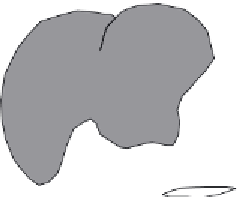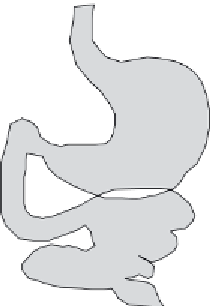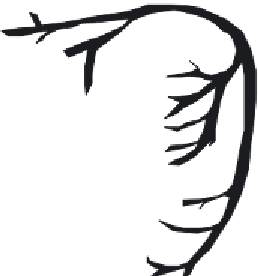Biology Reference
In-Depth Information
Stomach
Liver
Gall bladder
Bile duct
Portal
vein
Intestines
Figure 8.4
Enterohepatic circulation (as indicated by
→
). Polar xenobiotic conjugates are secreted
into the intestine via the bile duct and gall bladder. Conjugates are hydrolyzed in the intestines,
and released xenobiotics are reabsorbed and transported back to the liver via the portal vein.
Reproduced from
LeBlanc (2010)
, Figure 9.4.
Reprinted with permission of John Wiley & Sons
.
liver through portal circulation, and the process is repeated. Enterohepatic circulation
thus increases the biological half-life and possibly adverse effects of toxicants, particu-
larly to the liver. For therapeutic purposes, the cycle can be interrupted by feeding an
agent that binds the hydrolysis product and prevents its reabsorption, as in the use of
cholestyramine in chlordecone poisoning.
RESPIRATORY EXCRETION
Volatile toxicants such as ethanol or pesticidal fumigants may be eliminated via the
lungs, as may volatile metabolites, including acetone and carbon dioxide. Respiratory
excretion is not known to be an important route for excretion of pesticides, in general,
or their metabolites.
OTHER ROUTES OF EXCRETION
There are a number of other, less important routes of excretion, including gender-
linked routes and alimentary elimination, and several routes based on natural secretory
or growth processes are known.
Gender-Linked Routes of Excretion
Certain routes of xenobiotic elimination are restricted to females, including excretion
through milk, eggs, and fetus. Although such excretion is probably of minimal benefit
to the mother, it may have serious consequences to the offspring.
























Search WWH ::

Custom Search